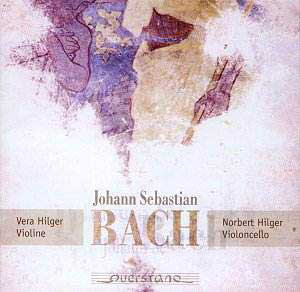|
|
Search MusicWeb Here |
|
 |
||
|
Founder:
Len Mullenger (1942-2025) Editor
in Chief:John Quinn
|
|
|
Search MusicWeb Here |
|
 |
||
|
Founder:
Len Mullenger (1942-2025) Editor
in Chief:John Quinn
|
 |
Johann Sebastian
BACH (1685-1750)
|
|
CONTACT INFO |
|
Vera and Norbert Hilger had a very interesting idea in transcribing some of Bach’s keyboard works for violin and cello. Who would have thought that such transcriptions could work so well? After all, Bach’s keyboard works are intensely polyphonic, and two instruments alone would reduce that polyphony to two simple lines of melody. Yet, somehow, it works. Their transcriptions bring out the essence of these keyboard works with a truly unique sound. |
|
Return to Index |